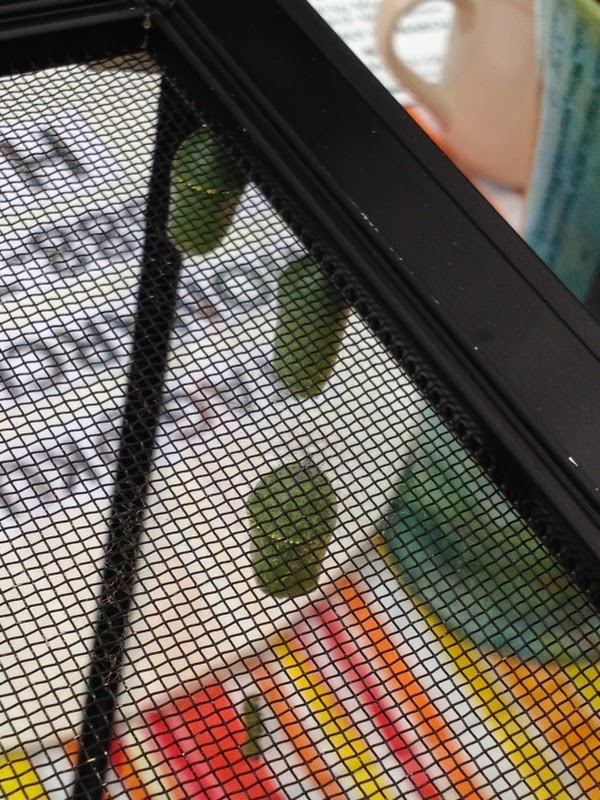There were in all stages of larval development.
Hanging from the screening on the top were several pupae.
There were several containers (buckets, plastic bins) with larvae. Here, a larva was in the final stages of forming the pupa. The arrow is pointing to its last shed skin.
Rod Parrott is very knowledgeable about different kinds of butterflies and has an extensive garden where he nurtures them. This article (it was laminated under a second layer of plastic) from 2010 outlines his activities.
He displayed cecropia larvae which are beautifully coloured. This gorgeous blue one was feasting on choke cherry leaves.
Here it is closer up.
This one on the same plant appeared to be leaning back, perhaps taking a break after gorging itself. I am fascinated by the different colours on the one larva - green, blue, orange, yellow, black.
I'm already thinking of how I can knit one of these.
Rod had several field guides on display and encouraged me to take photos of some of the relevant pages. I will be definitely acquiring my own butterfly and moth field guide in the near future.
These were some black swallowtail butterfly larvae.
These spicebush swallowtail larvae prefer a diet of sassafras leaves. Those 'eyes' are not really eyes but a type of camouflage to psyche out their predators.
The marking of the butterflies is done with adhesive stickers that are about 1cm in diameter (These are sample ones).
The guru of monarchs is Don Davis shown here with a blowup of the information found on the monarch stickers.He keeps the monarchs in a cooler - each in a little envelope. They are fairly dormant at cooler temperatures. He then attaches the sticker to the underside of the hind wing, fairly close to the body.

He then handed this one to me so I could release it (please excuse my unsightly thumb cuticle - ahem).

I then released her for the beginning of her flight down to Michoacan Mexico which, according to this poster, should take her about 35 days.
Don Davis has had documented success with his program over several decades. He received this Guinness award in 1989.
More recently, he received word via Monarch Watch that one of the monarchs he released in August of 2012 was recovered in Michoacan, Mexico having travelled 3350 miles (over 4300 km - the certificate is mistaken). The tag was found on a dead butterfly.




















No comments:
Post a Comment